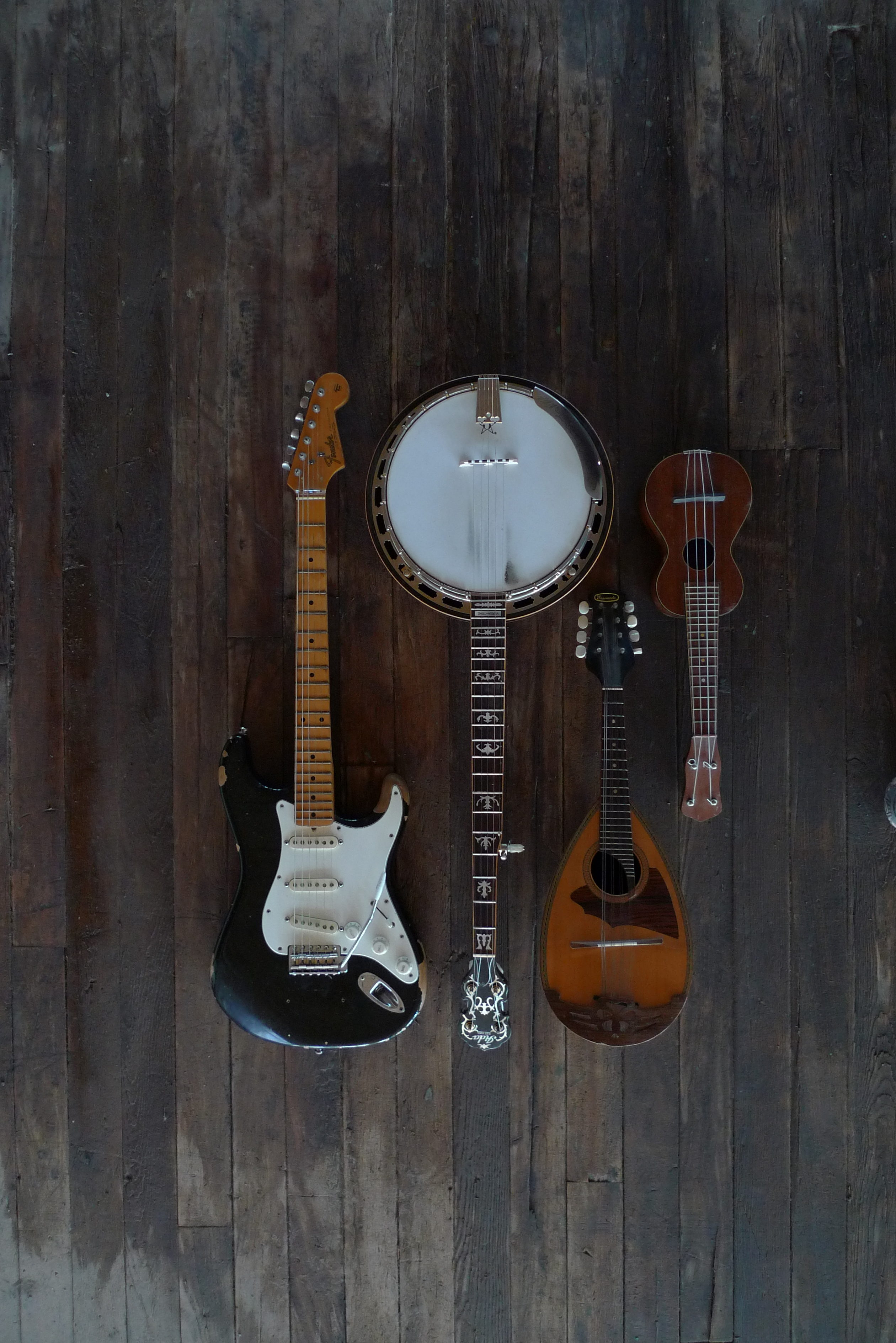 I have been playing 5-string banjo since the late Reagan years and teach in the following styles: frailing/clawhammer, upstroke, and 2- and 3-finger picking in the styles of Roscoe Holcomb, Dock Boggs, Morgan and Lee Sexton, and Earl Scruggs/Ralph Stanley. As a player, I favor the many old-time styles I mentioned. My personal approach to the instrument is based on the playing of those Kentucky/western Virginia players. I have made several trips to Kentucky and Virginia to experience the music and the players. Lee Sexton has been generous with his time and music. I have also been taught by Tony Trischka, Mike Seeger, and Martin Grosswendt.
I have been playing 5-string banjo since the late Reagan years and teach in the following styles: frailing/clawhammer, upstroke, and 2- and 3-finger picking in the styles of Roscoe Holcomb, Dock Boggs, Morgan and Lee Sexton, and Earl Scruggs/Ralph Stanley. As a player, I favor the many old-time styles I mentioned. My personal approach to the instrument is based on the playing of those Kentucky/western Virginia players. I have made several trips to Kentucky and Virginia to experience the music and the players. Lee Sexton has been generous with his time and music. I have also been taught by Tony Trischka, Mike Seeger, and Martin Grosswendt.
I teach bluegrass via several of the excellent method books by Tony Trischka and Earl Scruggs. I had the great fortune to take a 5-hour group lesson from Tony Trischka.
In an introductory lesson I like to play in several different styles to give students a sense of how things look and sound. There is a vast continuum of banjo styles to explore. Some are very easy, and some require more time. They are all capable of bringing distinctive music from the instrument.
Here’s a short listening list—try the library for some of these:
Mountain Music of Kentucky
This is a 2 disc set recorded in Kentucky on porches and in living rooms in the late 50’s. Roscoe Holcomb’s first recordings are here. This is a great set, and what I was advised to start with when I began building my collection. It’s on Smithsonian/ Folkways.
Roscoe Holcomb
The High Lonesome Sound,
An Untamed Sense of Control
These recordings are absolutely essential listening for any banjo player/student. Roscoe plays in a variety of styles with powerful technique, yet it never ever sounds even slightly overdone. Brilliant. Both discs are on Smithsonian/ Folkways. Roscoe also plays guitar and harmonica on these discs.
The North Carolina Banjo Collection
This a 2 disc set. It’s mostly vintage recordings featuring lots of different players and approaches- all traditional. If you don’t like 20 of the songs, there are 22 more to listen to. It’s a good regional banjo encyclopedia, and is on Rounder Records.
Hobart Smith
Bill Monroe apparently said Hobart was his favorite old-time banjo player, and Bill knew some good banjo players. I have In Sacred Trust (Smithsonian/ Folkways) and Blue Ridge Legacy (Rounder) and like these recordings quite a bit. Hobart also plays guitar, fiddle, and piano.
Lee Sexton
In the process of making the film Linefork (and in the years before), Lee has been kind enough to teach me, and I am grateful to him for that. Whoa Mule is his CD, on June Appal Recordings. His first recordings are on Mountain Music of Kentucky.
Morgan Sexton
Morgan Sexton is Lee Sexton’s uncle. His CD, Shady Grove is on June Appal Recordings, and was recorded late in his life. Elegant, unhurried playing and a repertoire of ancient songs. Here is a link to a short film that features Morgan and lets you see him playing banjo at home.
Dock Boggs
Dock developed his own style, a pre-bluegrass 3-finger picking/brushing thing that fit blues and English ballads equally well. He uses some very interesting tunings. The early recordings are stark, harsh, singular, and compiled on one CD titled Country Blues. His Folkways Years is a double CD (Smithsonian/ Folkways) that is a bit more listenable to most people. I say both are great.
Doc Watson
Look this guy up if you don’t know the name. Known for his guitar playing and singing, he was an excellent banjo player too.
Ralph Stanley
I like the early stuff most, but he still sounds good.
Black Banjo Songsters
This is an untranscribable and awesome collection of mostly 1970’s field recordings on Smithsonian/ Folkways. This was done live. Not for the faint of heart. The rawest clawhammer you’re likely to find.

That’s me playing my banjo with some very good friends for some folks where they live.

That’s just what it looks like—it’s a bass drum with strings on it—this instrument is not so good for super-fast fingerstyle pyrotechnics. The picture was taken up at Bennington College—the instrument was built in the 70’s. In addition to its size, it sounds huge too.

